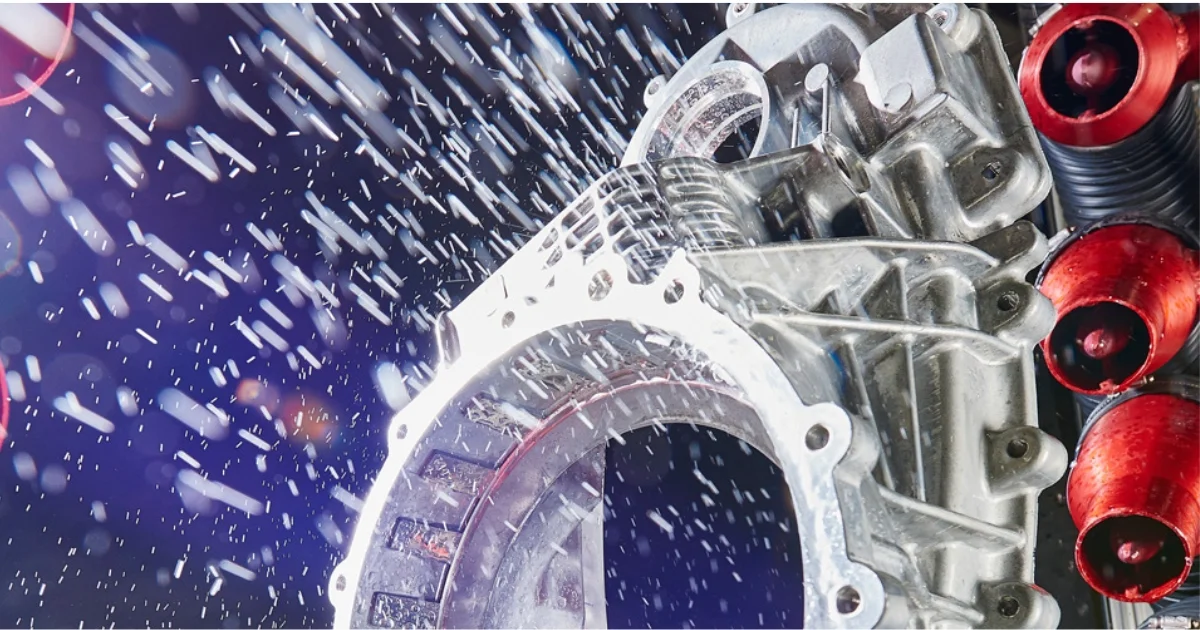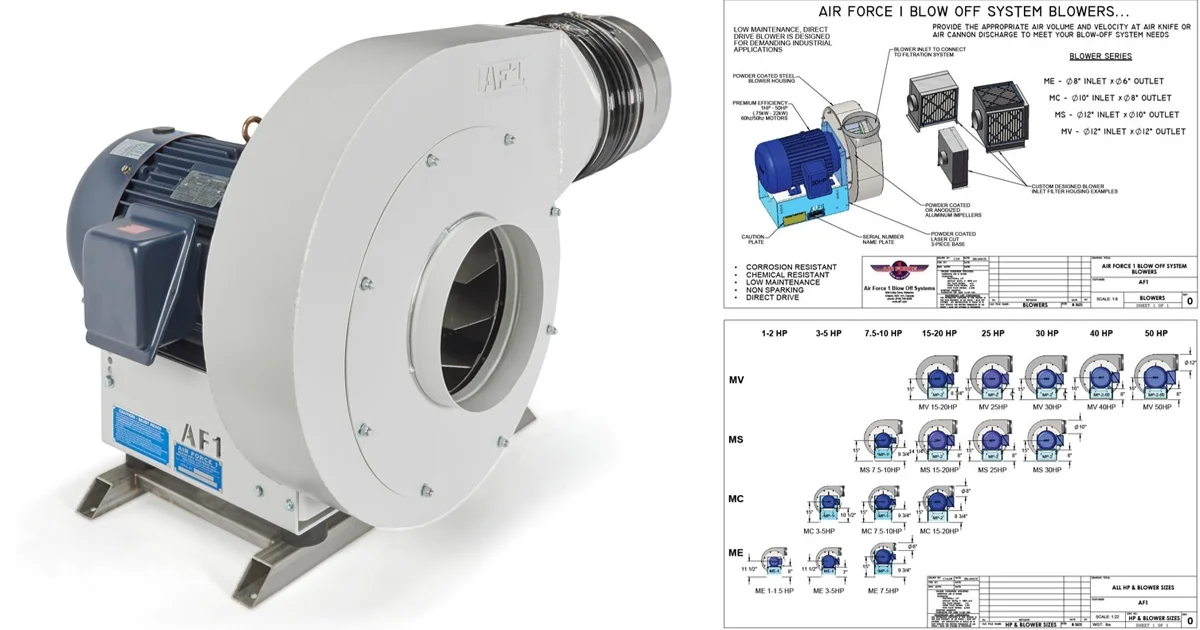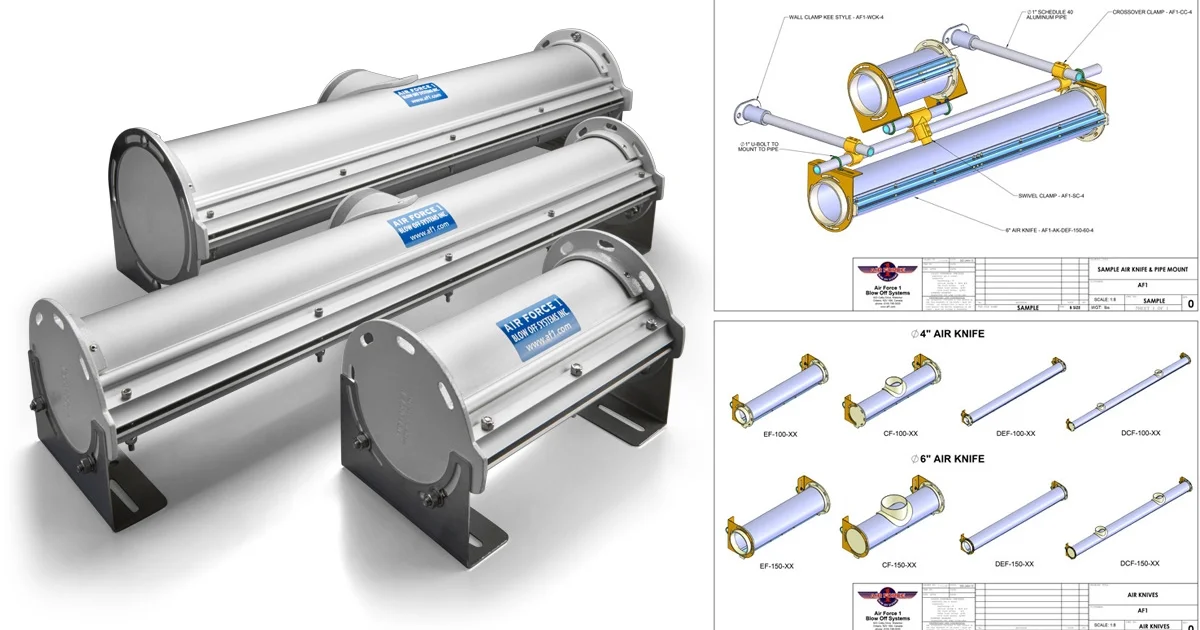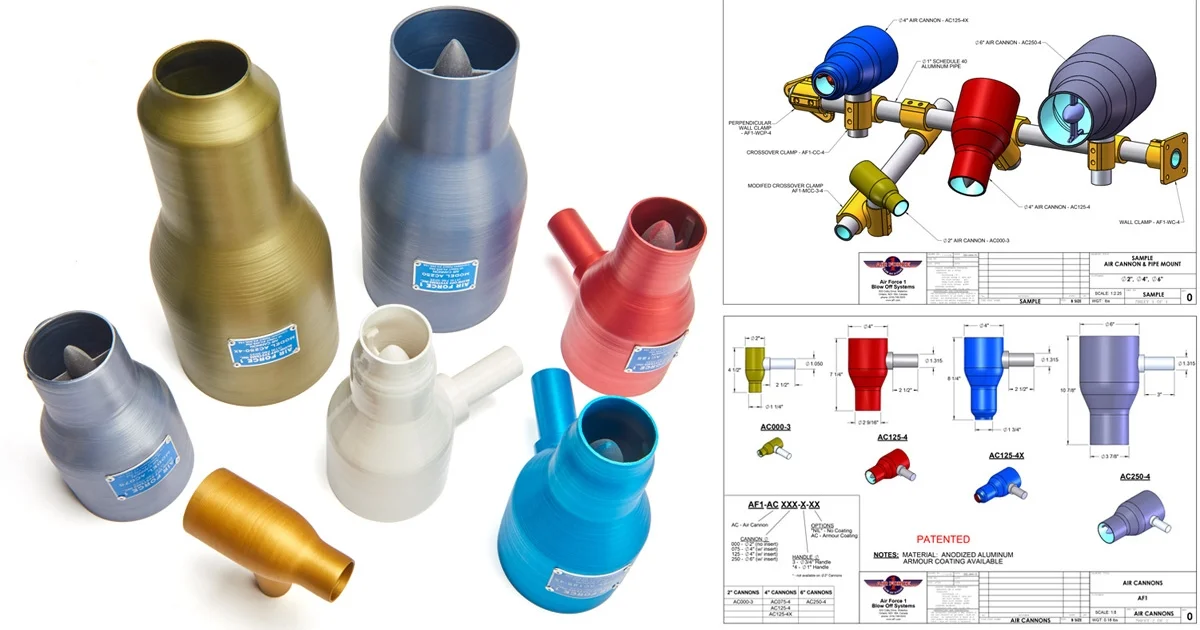
Liquid blow off systems are often used to remove water, dust, coolant, and other materials from products and parts during the manufacturing, processing, or packaging process. Typically, you have the option of either compressed air or blower-operated systems.
While both have their uses, blower-operated systems have a distinct edge due to their energy efficiency and lower long-term operational costs.
In the last decade, the high energy cost of compressed air has become a major concern, opening to broader discussions from suppliers of both technologies.
Both blowers and compressed air amplifiers can drastically reduce energy costs and improve productivity – however, a leading blowoff system provider, we at Air Force 1 (AF1) want to highlight the advantages of blower-operated liquid blowoff systems and help you get the most out of your production.
Exploring the Facts - Blower-based vs. Compressed Air
When it comes down to deciding between compressed air and blowers for a blow off application, there are several key factors that come into play. The best choice depends on your needs, but it’s clear that blower-based liquid blow off systems offer substantial benefits.
The Availability of Energy
While certain settings may make compressed air seem more convenient, it can become a hidden cost – particularly if an entirely new system is installed. It can seem like a major pain. Blow off systems, on the other hand, run on electrical power.
While the initial installation costs can be high depending on the system, the energy savings over time can make blow off systems the more economical choice. Also, blow off systems can provide a consistent performance without concerns over energy drainage typically associated with compressed air systems – particularly in larger applications.
According to Market.us Scoop, compressed air systems are significant consumers of energy. They use up approximately 10% of all industrial electricity consumption overall. This totals around 8.8 terawatt-hours (or TWh) annually, resulting in CO2 emissions of about 3,100 kilotons (or kt) per year.
Looking at Space and Weight
Blow off systems usually require more space than a compressed air system, but in most applications, the trade-off is worth it. Compressed air systems may be smaller and more lightweight, but they come with a high energy consumption that offsets the initial benefits.
As well, compressed air systems can sometimes offer a stronger blow off force (depending on the system it’s being compared to), but today’s blower-based systems can be equally effective, especially when heat is introduced into the airflow to boost drying efficiency.
System Noise Level
Blowoff systems are generally nosier than a lot of modern compressed air systems, but silencers can be implemented to reduce this issue. Compressed air systems, on the other hand, do tend to be quieter, especially as the technology continues to evolve. This makes them more appropriate for noise-sensitive environments.
However, considering the advancements in noise suppression technologies, blow off systems are quickly closing the gap, allowing you to prioritize performance over noise levels.
Considering Application Particulars
For continuous blow off requirements, blow off systems will always reign supreme. However, in other scenarios where blow off can be cycled, compressed air systems can appear to be more economical.
However, the key is in the details. A conveyor system, for example, can use compressed air efficiently if properly cycled, but a blow off system can run near constantly, even when not required.
This consistent performance, especially for larger systems that require constancy, ensures highly efficient operations without the “start-stop” wear and tear of compressed air systems.
The System’s Reliability
When it comes to reliability, blowers have a clear advantage in larger systems, where compressed air systems may falter due to the complex infrastructure required to maintain them.
Blowers are also less prone to downtime caused by maintenance issues, provided they're regularly serviced. In contrast, compressed air systems often require parts to be replaced, increasing maintenance time and cost.
General Energy Cost
One of the major advantages of a blow off system is its overall energy efficiency. Blow off systems are simply more energy-efficient in large systems designed to run continuously; offering significant cost savings in the long term. This is the major selling point for a lot of people looking to produce a high yield for high demand.
While compressed air systems are effective in more intermittent applications, they simply don’t compare with the overall energy savings that blow off systems provide in larger scale operations.
Overall System Cost
Generally, the initial cost of blow off systems can be higher than a compressed air system, but like many other aspects of business, a bigger up-front cost can save you buckets in the long run. Larger systems with a high production output benefit from blow off systems, as we discussed.
They’re highly efficient. Compressed air systems, on the other hand, may have a lower initial cost, but when faced with the long-term energy and maintenance costs that come with them, blow off systems often prove to be the more cost-effective choice.
It’s all about investing in your business. There’s a time and a place to cut costs – but this isn’t one of them.
Maintenance and Operating Cost - Things to Think About
Liquid blow off systems have the overall advantage of lower maintenance costs when compared to compressed air systems. While compressed air systems boast that they’re typically lower maintenance, they still require a good deal of attention when it comes to filtration and proper installation to avoid potential pitfalls.
Blow off systems, however, benefit from a more minimal wear and tear and offer a more consistent performance when paired with regular maintenance, making them the smarter choice for long-term efficiency.
The Types of Liquid Blow Off Systems - AF1
AF1 is one of the leading suppliers of patented liquid blow off systems and works with you to ensure you have the tools best suited for your industry. Depending on your business’ needs, our team can help match you to the right system based on your desired application and ensure that you’re satisfied.
When it comes down to liquid blow off systems, there are several components that need to be considered. AF1 offers several blow off systems to suit your unique needs – but what are they, and what do they do exactly?
AF1’s Liquid Blow Off Systems are industrial devices specifically engineered to remove water and other liquids from surfaces using high-velocity air. These systems are widely used across various manufacturing and processing sectors where efficient drying of products or components is crucial before moving on to the next stage of production or packaging.
Blower
The blower is the essential core of the overall system. It produces high velocity air that is adjustable, allowing for more precise control over both air pressure and the overall rate of air flow. This flexibility ensures that the overall system can be customized to meet your specific requirements based on your industry.

Air Knives
Despite their name, air knives don't actually cut. They're long devices that emit a narrow, high-velocity stream of air that can cut like a knife, depending on the application. They deliver a continuous sheet of air across surfaces, making them extremely effective for drying flat areas. Air knives, in particular, are very useful in conveyor belt scenarios, where products pass through an air stream to completely remove any present liquids.

Air Cannons
Also often referred to as air nozzles, air cannons deliver concentrated bursts of air designed for targeted drying. They’re ideal in situations that require very precision drying – such as when dealing with products that have intricate designs, geometric shapes, or just hard-to-reach crevices. They provide effective solutions in situations where the drying needs are more complex than drying a flat surface.

Liquid Blow Off vs. Compressed Air - Which do You Choose?
Choosing between a blow off system and a compressed air system depends on your specific needs. It's not just about lower energy costs or producing more in the long run – you need to consider all the factors that affect your production.
Liquid blow off systems, despite being larger and pricier up front, offer significant savings through energy, reduced maintenance costs, and overall longevity. Especially if your business requires continuous production.
Compressed air systems, on the other hand, are indeed smaller and less expensive, but struggle to keep up with the modern efficiency and overall power of blow off systems in more demanding environments.
In the end, the best choice is the one that maximizes production, minimizes costs, and keeps your operation running smoothly. When energy savings, performance, and reliability are factored in, blower systems often come out on top, providing a superior solution for efficient blow off applications.
Are you looking to make the switch to or implement a blow off system into your production line? Fortunately, AF1 has solutions tailored to your needs. We offer several liquid blow off systems to ensure you’re able to maximize your output.
Contact us to get a quote and get your manufacturing line running optimally today.

